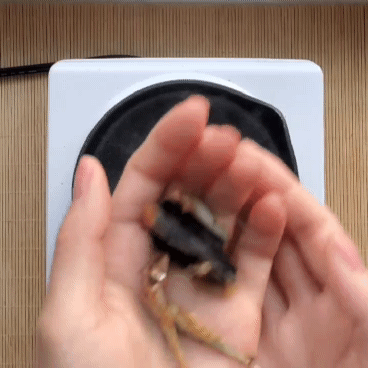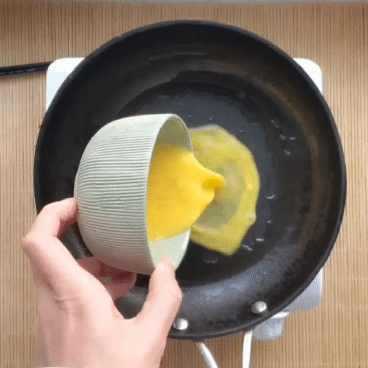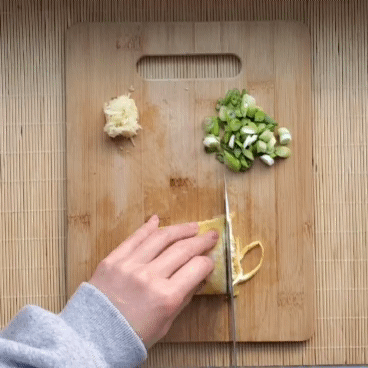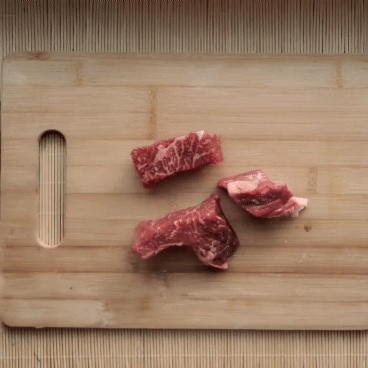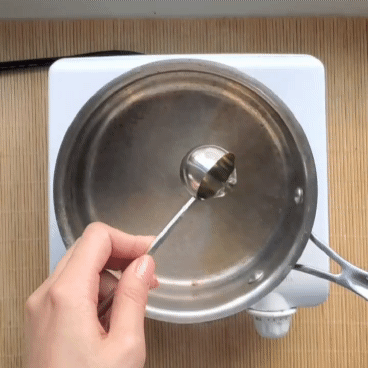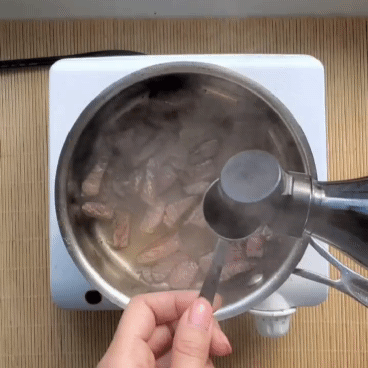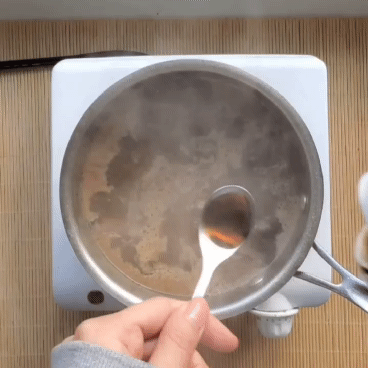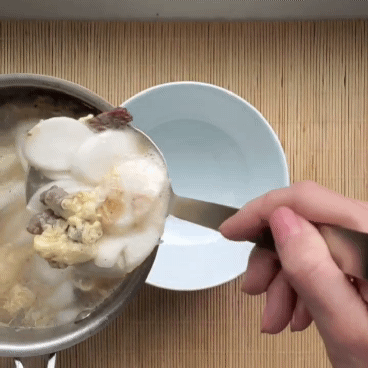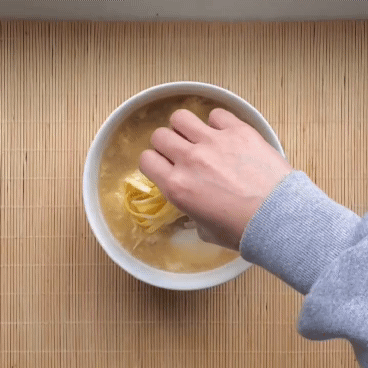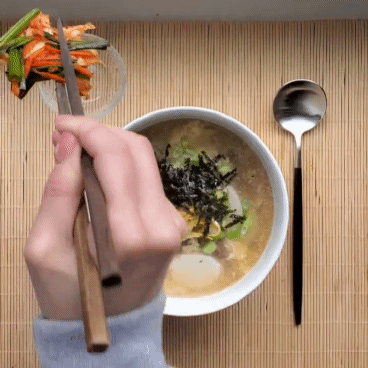January
Dduk guk (new years’ soup)
Happy New Year! :) Ring in the new year with the soup that every Korean person needs to start the day with as an old, timeless tradition: dduk guk.
dduk guk is a delicious, comforting soup made with rice cakes, beef, and eggs, often topped off with scallions and shredded gim (seaweed). And only after you eat this soup, we say that you’re adding another year to you life.
You might have noticed that the rice cakes in this soup looks quite different from the rice cakes in tteokbokki. while tteok (dduk) indicates the same type of rice cake here, the ones used in this soup is the thin-sliced form of a larger, thicker ttoek called ga-reh tteok (seen below, side to side with tteokbokki rice cakes)
photo credits
fun fact, our ancestors cut the rice cakes into thin and round slices to resemble the coins that were used as their main currency, to wish an abundant year. here’s what those coins looked like back in the day (1000 years ago)
photo credit
Although Dduk guk is also eaten on the lunar new year, because of its association with a “new year,” it’s commonly eaten on the first day of the official year as well. But is it weird to eat this any other time of year? absolutely not. along with a lot of traditional and seasonal Korean food, dduk guk is enjoyed especially on this holiday, but also all year round.
This year, the lunar new year falls on the January of 29th, and this is one of the two most important holidays of South Korea. So important that a total of three days (before and after seollal) are considered federal holidays where people get time off to visit their families.
Lunar New Year in South Korea has a history of its own, where it almost disappeared for a good 79 years until it was reinstated again. Ready to go down this rabbit hole? ;)
Lunar New Year, Lost and Found
Did you know? Seollal was once lost, and only reclaimed in 1989.
In ancient Korea, we started out using the lunar calendar. This was because back in the day, it was much easier to observe the movement and shape of the moon through a telescope rather than trying to look at the blazing sun. So a lot of holidays and patterns in farming and fishing were determined by the lunar dates.
The Gregorian Calendar we use today is a solar calendar, which Korea started using in 1896 when the King of the Empire of Korea (1896-1910) ordered a nationwide transition. What’s interesting is that with the policy change in 1896, Seollal also got moved to the Gregorian January 1st. Then came the Japanese colonization in 1910-1945, when the Japanese attempted to erase Seollal and its traditions altogether.*
*during the colonization, the Japanese oppressed Seollal celebrations by closing down Korean rice cake mills, and smearing the new hanboks of children with dirt on Seollal.
Even after the liberation from the Japanese regime, it took Korea another 40 years to reclaim Seollal. This was mainly due to South Korea being under the dictatorship of President Park Chung Hee for several terms, including the one he achieved through a rigged election. Then came came the democratization of South Korea, and finally in 1989 President Noh-Taewoo restored the holiday to its original name and original date, as the people wanted it to be.
Apart from the major holidays, the daily lunar dates still accompany a lot of Korean old school calendars that are printed and sold today. In these calendars, you can see those lunar dates in small numbers beneath the actual date and month.
This is not only because of our holidays, but also because for the current elderly generation in Korea, it has been customary to celebrate birthdays in the lunar calendar. This is why I, too, grew up celebrating my grandparents’ birthdays several weeks after their actual birthday. With time, there will only be fewer and fewer people who actually apply their lunar birthday in Korea. But our lunar holidays will continue to be an important marker of the past, and the love for our history and traditions.
Seollal Traditions
Speaking of traditions, here are some things Koreans do on Seollal today:
Seol-bim (설빔): Seol-bim refers to the new clothes that you wear on the new year. traditionally, children wear colorful hanboks on Seollal.
cha-rae (차례): cha-rae is a ritual performed to honor the ancestors and in this case, greet them for the new year. Typically, a table full of Korean chae-rae food arranged in a specific way and each person pays respect to the ancestors by bowing down. This tradition now varies depending on the household and religion. Growing up in a Christian household, our family forgoed the cha-rae and did a family Seollal service at home instead.
sae-beh (세배): this is the most significant and common tradition of Seollal, where the younger generation pays respect to the elderly. Usually the grandparents or the oldest in the family sits across from the rest, and each family lines up to bow to them to wish them a good year. Once the elders receive the bows, greetings and blessings, the elderly in return, share their blessings and hand each person an envelope with money. we call this sae-bet-don. When I was a kid, my sebet-don from my grandparents was where 99% of my income came from.
Various traditional games: Although this is not so common anymore, very traditional households will play Yutnori (a type of board game with special “dice” called Yut) as a whole family, and fly kites.
dduk-guk (떡국): to celebrate the new year, the extended family gets together to eat dduk guk together.
Here’s the recipe for dduk-guk from the calendar!
enjoy. scroll all the way down for a step-by-step visual recipe :)
Ingredients (2 servings)
2 eggs
2-3 anchovies and 1 kombu piece for broth
2.5 cup water
3 oz of stew beef
2 cloves garlic, minced
1 scallion
1 cup of frozen dduk
(the flat kind specifically for dduk guk)
1 Tbsp sesame oil
1 Tbsp vegetable oil
1 Tbsp soysauce
1 tsp fish sauce
salt, pepper
boil 2.5 cups of water with the anchovies and kombu while we prep the ingredients
beat 1 egg with a pinch of salt, and spread it over a non-stick oiled pan to make a thin crepe
mince the garlic, chop the scallions, and fold the egg crepe to cut it into thin strips (see GIF below)
cut the beef into strips, or bite-size pieces
on a heated pot, add 1 Tbsp each of sesame oil and vegetable oil, and stir fry the beef
once the beef is mostly brown, add 1 Tbsp of soysauce
add half the broth (from #1) first, bring to a boil, and then add the other half
add 1 tsp each of fish sauce and minced garlic, and season the broth with salt and pepper as needed.
add the rice cakes
boil another 3-4 minutes
carefully add another beaten egg in the end, and gently swirl the pot. cover the pot and let it simmer another 1 minute.
scoop the soup with the rice cakes into a bowl
garnish with chopped scallions, egg crepe, and thin sliced seaweed.
enjoy with some kimchi :)
1. boil 2.5 cups of water with the anchovies and kombu while we prep the ingredients
2. beat 1 egg with a pinch of salt, and spread it over a non-stick oiled pan to make a thin crepe
3. flip over the crepe, and transfer to cutting board
(this egg crepe is called ji-dan)
4. mince the garlic, chop the scallions, and
fold the egg crepe to cut it into thin strips
5. cut the beef into strips, or bite-size pieces
6. on a heated pot, add 1 Tbsp each of sesame oil and vegetable oil, and stir fry the beef
7. once the beef is mostly brown, add 1 Tbsp of soysauce
8. add half the broth (from #1) first, bring to a boil, and then add the other half
9. add 1 tsp each of fish sauce and minced garlic, and season the broth with salt and pepper as needed.
10. add 1 cup of rice cakes, (frozen is ok) and boil another 3-4 minutes
make sure you get the flat rice cakes specifically for dduk guk
11. carefully add another beaten egg in the end,
12. and gently swirl the pot. cover the pot and let it simmer another 1 minute.
13. scoop the soup with the rice cakes into a bowl
garnish with chopped scallions, egg crepe, and thin sliced seaweed.
enjoy with some kimchi :)





